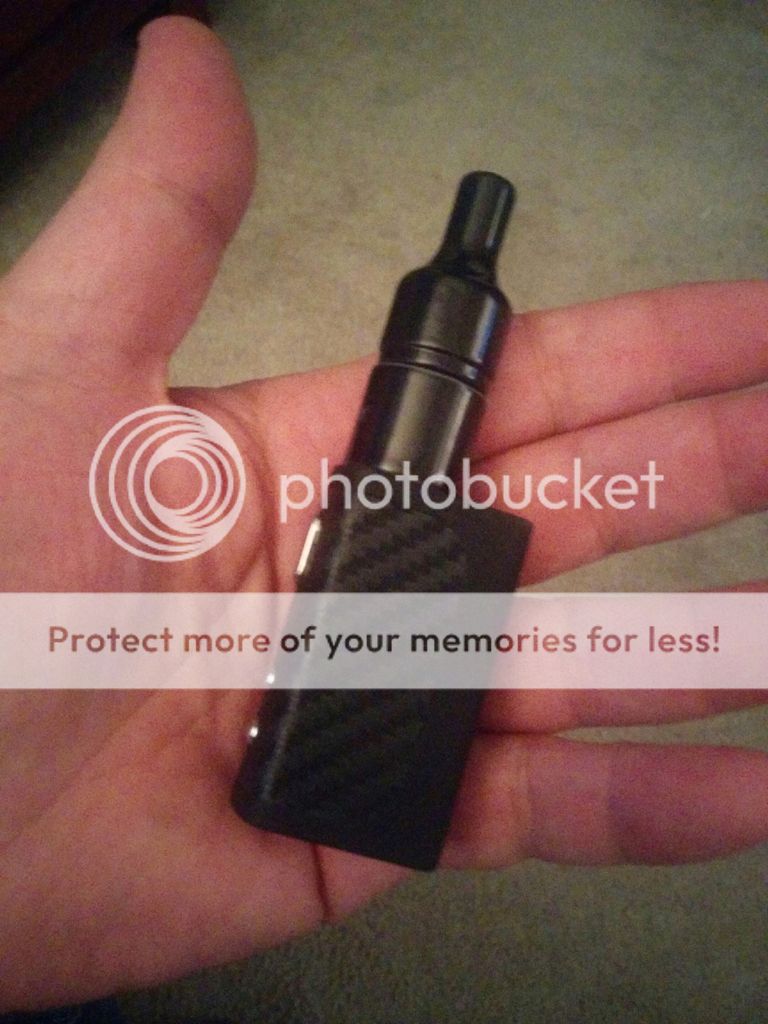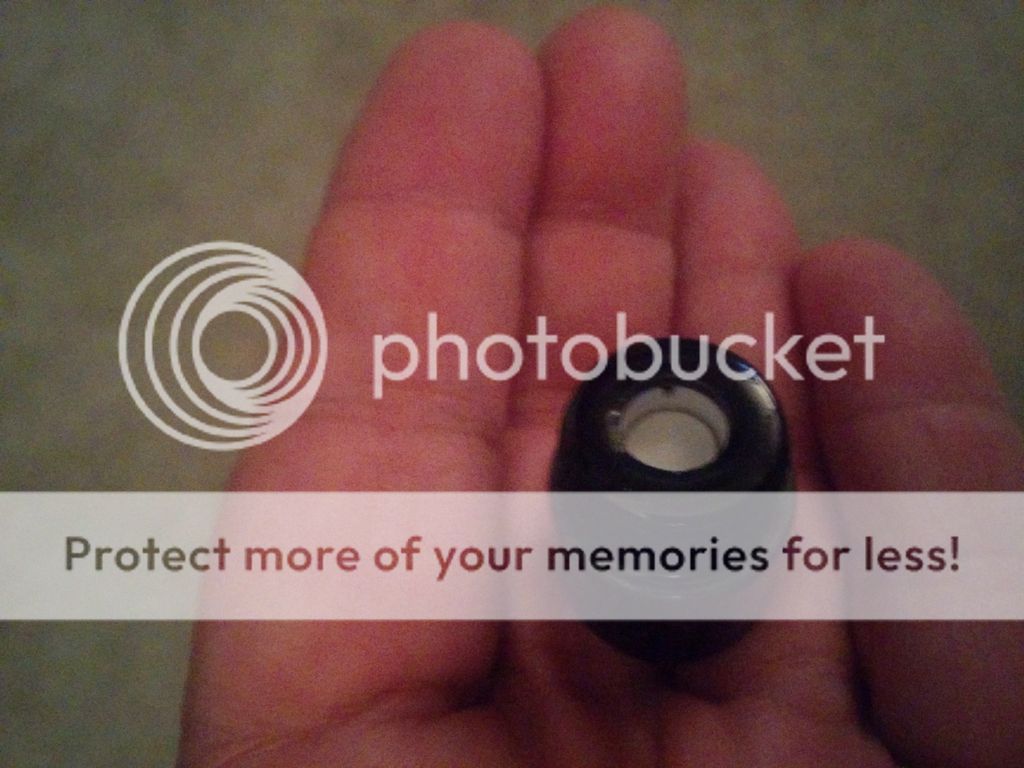So, based on your recommendation I bought the VTC Mini to try out. Nice, I think. More useful than the TC40W and like the Invader you can run both power (VW) and Temperature Control (TC) at the same time. So I've set my power maximum to 12.5 Watts and the temperature (using the Ni range) to 330F (although that might change, still working on it).
It does pretty good, so we know it's way more than 330F but that's not important really, it does go into 'temperature limit' if it's low on concentrate sooner.
And yes, you can display the temperature change, I suggest you try and see? With those settings and V3 of the software the measured temperature is displayed on line 4 of the display, mine is 0.74 ohms cold. When it's hot it shows 1.06 ohms when it goes into temperature limit (it climbs in step with the display of temperature). That's a delta of.32 ohms,(1.06-.74) 43% (.32/.74*100). Normal metals are half a percent or so per degree C, give or take, so this seems at least reasonable given we don't know what alloy is being used against what's expected. But yes, there's a real resistance change and you can confirm it with the gear you have.
OF
tl;dr - Yes, I agree with your observations, and my testing results agree with yours.
My two replacement atty's showed up on Weds. I burned out my original one with overenthusiastic cleaning a month or so ago (15W for way to long...). Both the new atty's
do show a resistance change with temperature, which my first one didn't. (Or maybe the iStick 40W-TC I was using with the first one just wasn't as suitable for monitoring resistance changes as the VTC-Mini I'm using now is; I suspect it was the original atty though, since my ohm meters didn't show a change with temperature either. I can't re-test the original one as it's an open circuit now...).
So before I put them into service, I did some experimenting with the new, virgin, never been loaded with concentrate atty's.
The two new atty's have a cold resistance of 0.77Ω and 0.74Ω and they rise in resistance to ~1.15Ω when I feed 12.5W into them and wait for them to just start glowing red. (My atty's need 12.5W for almost 10 seconds before they just start to glow red). I don't have an IR temp meter and there's no way for me to measure what the temperature of the ceramic is, so I picked an arbitrary TC (I chose Ni200 as you did), set the power limit to 12.5W, and set the temp limit to 600°F (Max). Then I watched the ceramic disk while monitoring the resistance and noted that at 1.15Ω the disk just started to glow red. The (inaccurate) temp reading is irrelevant, though it was always below the 600°F I set, meaning that the VTC-Mini wasn't going into temp limit.
What this "experiment" told me is that since I don't want the disk to ever glow red while I'm vaping, I don't want the resistance to ever go as high as 1.15Ω. (Why I've decided I don't want the disk to ever glow red when I'm vaping it belongs in another message). So then I started lowering the temp limit while watching the resistance until I reached a temp where the limiting started when the resistance was 1.0Ω-1.1Ω. This turned out to be, wait for it, 330°F.

And so far, three days into using these settings, I haven't felt the need to change them, except when I've been outside, which has been in the 20°-30° range here in NYC. And then I just raised the temp limit to 340°F.
So what do I think this means? I know that the mod's temp control function really only
measures one thing, the (changing) resistance of the load. The temperature setting/readout
value is solely based on knowing what the thermal coefficient (TC) of the load is. When one sets the temp limit, one is
really setting the maximum allowable
resistance of the load (i.e., a resistance limit). If one knows the TC of the load, then one can calculate what the temperature is, and then one could expect that the temperature readout on the mod would be reasonably accurate. But not knowing the real temperature is not very important to my enjoying the use of the DT atty. That said, if the TC of the DT atty is linear in the temp range we care about, then entering the correct TC will allow the temp readout to be fairly accurate. With the VTC-Mini we've been talking about, one can enter a custom TC (three, actually) besides the fixed (Ni200, Ti, SS, etc) ones.
With some effort (and knowing what the real heater temperature is), we could even use a custom constant and get the display to show real temperatures, not estimates.
This leads me to ask you how long you think it will take you to figure out the correct TC for our atty's?










